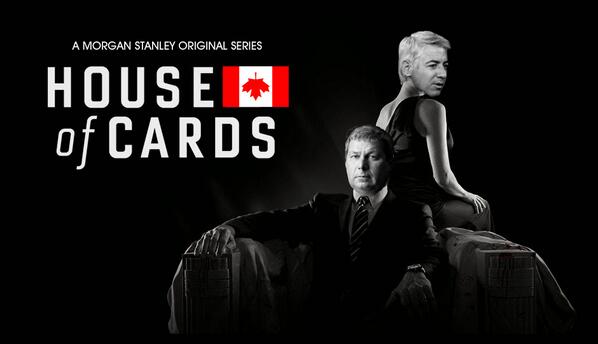You're break even for the night, which is great, but disappointingly there have been no moments of ecstasy or terror. Just rote, repetitive play, chipping up and chipping down. Then finally, an interesting hand. Not a guaranteed winner and not a guaranteed loser, but substantive. If you play it right, you'll end your night walking away with a huge pot, without having risked a ton of money.
I feel the same way about Scientific Games $5.1B takeout of Bally Technologies. Its a deal that some holders seem to be particularly concerned about because post close, their debt/EBITDA will jump up to 8X. Debt levels, circa 2008's binge mentality is not something I'd typically consider, although I feel like this is a smart move for $SGMS. Understandably the perceived risk of renewed pressure on the balance sheet has some people worried, although I am not one of those people. Ron Perelman doesn't seem to be too concerned either.
From my perspective it's fundamentally a very simple story about cost savings, FCF and management. No fancy chart wizardry, short-sale hit pieces, 10MB excel spreadsheets or 3 hour investor presentations necessary. Within two years the combined companies will enjoy $250M in annual savings via capex and cost synergies. Within the same time frame the company will improve FCF to ~$400M, which they'll use to pay down debt their debt load.
Really, when you think about it, even though the chatter around the deal seems to be either on the future of gambling or on the financing, the story is about neither of those so much as it is a story about management. It's easy to just assume in a powerpoint deck you'll be able to hit all these targets, but you don't have to look far back in the company's histories to see for yourself they can execute on integration. Applying management's plan to the last 12 months would have seen EBITDA margin improve 10% and the FCF margin increase to over 30% on EBITDA of $1.335B generated from over $3B in revenues.
Ultimately the company plans to use the improved FCF to quickly pay down their slated debt to ~4X within a few years, but again that all depends on management's pro formas and whether or not you believe them. Sure there has been some softness in some of the areas they operate in, but the combined entity will be very diversified, sourcing revenue from ten major areas (instant tickets, lottery systems, slots, WAP, gaming systems, utility products, prop games, electronic table games, online gaming and social gaming). As easy as it is to hate on the casino space 60% of SGMS/BYI combined revenues are stable and recurring in nature; 24% of their revenues are from instant products and lottery systems. The biggest risk to the combined company is that about 31% of their revenues (~$900M) is attributable to non-recurring gaming machine sales and gaming systems, although their combined sales in this segment doesn't appear to pose a grave risk to their health. This entire segment of their business would have to completely implode in the coming months to pose a serious risk to their operational plan and based on SGMS & BYI's recently filings, this shouldn't be a concern. In fact combined WMS/SGMS gaming segment sales for 2013 were just shy of $1B at $997.8M and in SGMS's latest 10Q the segment is showing revenue of $403M for the last six months and on track to achieve roughly $850-900M for the year. Also, BYI's EGM segment has grown ~13% to $382M. The combined company will be well positioned in the general space, ranking number 2 in revenue and EBITDA(behind GTECH/IGT) with EBITDA margin at roughly 45%. Their consolidated operations and resulting synergies will also help them manage any continued downturn in gaming sales, as seen in the WMS/SGMS merger.
Moody's seems to think that the debt is riskier than I do but they've made some key assumptions I disagree with:
- the expectation of continued softness in the gaming sector and only a modest level of consolidated EBITDA growth
- 75% of the company's proposed $220 million of estimated cost synergies are achieved
- and between $400 million to $450 million of absolute debt repayment.
Looking back at management's long list of acquisitions, BYI recently confirmed they'll hit $42M in savings as a result of their SHFL acquisition, although they originally estimated $30M. Likewise SGMS confirmed $100M in cost synergies by end of 2015 for their WMS acquisition. SGMS estimated $50M in savings for 2014, and they've revised that to $80M with $65M already realized. If you want to penalize management for anything it would be underestimating how efficiently they'd integrate their acquisitions, not falling 25% short of their informed synergy estimates.
The SGMS/BYI debt-financed merger represents an excellent opportunity presented by a very seasoned management team that has already demonstrated their ability to acquire, integrate and execute, without overpromising. They went to the debt market because they are confident they'll be able to deliver on their promised acquisition plan. And how do I know their pro-formas are up to snuff? I don't. No forensic accounting, no investigative journalism, just good old fashioned reading. I read management's old plans, their updates on those plans and compared that to where they're at now and then read some more. Management has done pretty good by that measure, so when they say they'll be able to execute these plans, I believe they will. This isn't a sexy momo name or activist target yet; it's a fundamentally solid long term investment that is significantly undervalued at $10.91/share(time of publishing). I don't even have anything snarky to say. I've been desnarked by the straightforwardness of it all. You either believe management can do this or you don't. You can buy or sell accordingly. To me its a gaming stock that seems more like an investment in management than it does a gamble on estimates.
